Additional notes (click to expand)
Horticulture
The only species in the genus Nandina although there are numerous cultivars. Originating in Japan, it has become an invasive weed in North America both through seed and rhizomatous spread.
Medicinal
N. domestica and its uses in Traditional Chinese Medicine. To read the full article look in references.
Nandina domestica Thunb.: a review of traditional uses, phytochemistry, pharmacology, and toxicology.
Nandina domestica: Thunb. is a traditional Chinese herbal drug that has long been used in China and Japan for the treatment of colds, fevers, asthma, chronic bronchitis, conjunctivitis, whooping cough, pharyngeal tumors, etc. Published data have reported at least 366 constituents from N. domestica, including alkaloids, flavonoids, lignans, terpenoids, phenolic acids and their derivatives, fatty acids, and others. Of these, the isoquinoline alkaloids are considered characteristic markers for N. domestica. These alkaloids also showed the most promising bioactivities. The crude extracts or semi-purified constituents of N. domestica exhibit a variety of activities, including antitumor, dermatological, anti-inflammatory, antioxidant, antimicrobial, and detoxification activities, as well as effects on respiratory system, etc. The fruit is considered poisonous when eaten raw, with nausea, vomiting, diarrhea, and abdominal pain as side effects after ingestion. Most traditional uses are supported by biological activities demonstrated in modern experimental studies, suggesting a potential medicinal value of N. domestica. However, more information is needed on its mechanisms of activity, pharmacokinetic profile of the constituents, and its safety and efficacy profile in humans.
https://www.frontiersin.org/ https://www.frontiersin.org/journals/pharmacology/articles/10.3389/fphar.2024.1407140/full
Nomenclature
Although called 'Heavenly Bamboo' it is a member of the Family Berberidaceae and not a bamboo.
H.F. Oakeley note
Other use
Contains cyanogenic glycosides which liberate hydrogen cyanide when damaged. Nothing eats it. Pharmacists have also found a chemical in the sap, called nantenine, which is a potential antidote to poisoning by ecstasy with which it shares the same molecular shape.
Oakeley, Dr. Henry F. (2013). Wellcome Library notes.
link
Phytochemistry
It contains the alkaloid Nantenine which is an antagonist at alpha1 adrenergic receptors and 5-HT2a Serotonin receptor. While an antidote to the effects of ecstasy in animals it has no licence for human use as the problems of testing any medicine in children who take ecstasy are almost insurmountable.
Wikipedia (August 2019)
Toxicity
Cyanide is liberated from damaged leaves by enzymes acting on cyanogenic glycosides in the leaf tissues. This toxicity doubtless contributes to the lack of predators affecting the plant.
It is not eaten by rabbits or deer so is useful in gardens where these are a problem. Birds may eat the seeds, but excessive ingestion kills them - the birds at the College do not eat the seeds so they remain decorative most of the year.
H.F. Oakeley note
In the HTA Guide to potentially Harmful Plants this plant is listed as: Humans/Pets: Harmful if eaten
https://hta.org.uk/poisonousplants
Geographical distribution
- Asia-Temperate, Eastern Asia, Japan
Nandina domestica Thunb.
Family: BERBERIDACEAEGenus: Nandina
Species: domestica Thunb.
Common names: Sacred Bamboo; Heavenly Bamboo
Distribution summary: C. China; Japan
Habit: Shrub
Hardiness: H5 - Hardy; cold winter
Garden status: Currently grown
Garden location: Far East (L)
Reason for growing: Medicinal, toxic, prescription only medicine
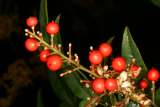
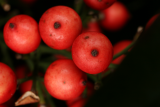
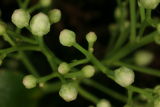
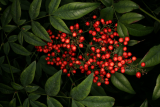
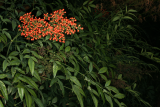
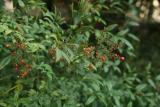
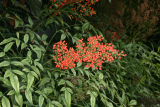
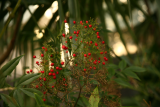
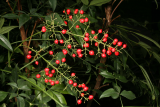
.JPG)
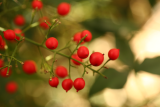

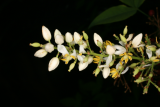

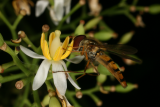
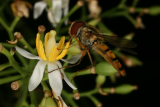
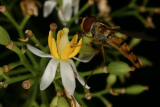
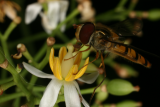


.JPG)
.JPG)
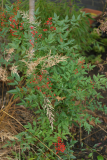
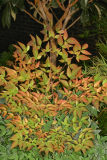
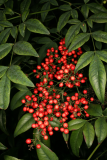
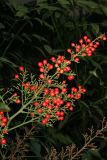
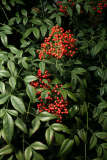

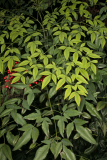
.JPG)
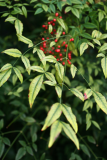
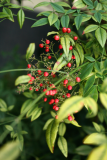
.JPG)
.JPG)

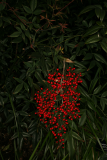
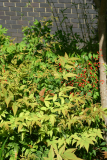
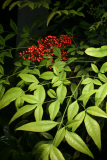
.JPG)
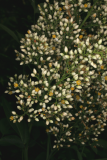
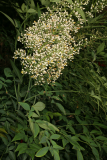
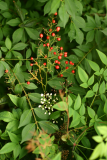
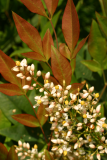
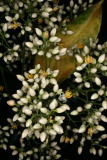
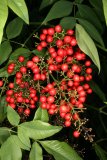
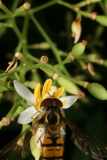
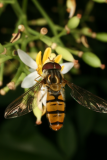


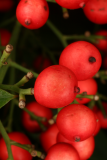
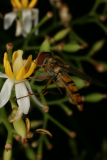
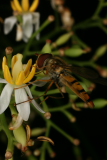

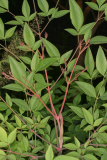
.JPG)
flowers.JPG)